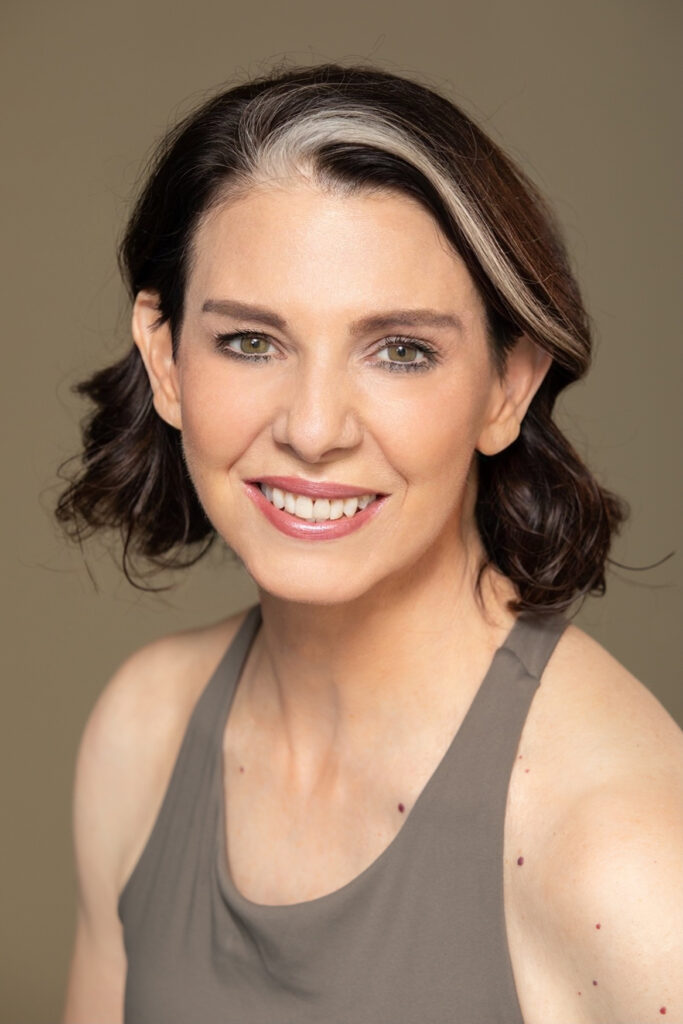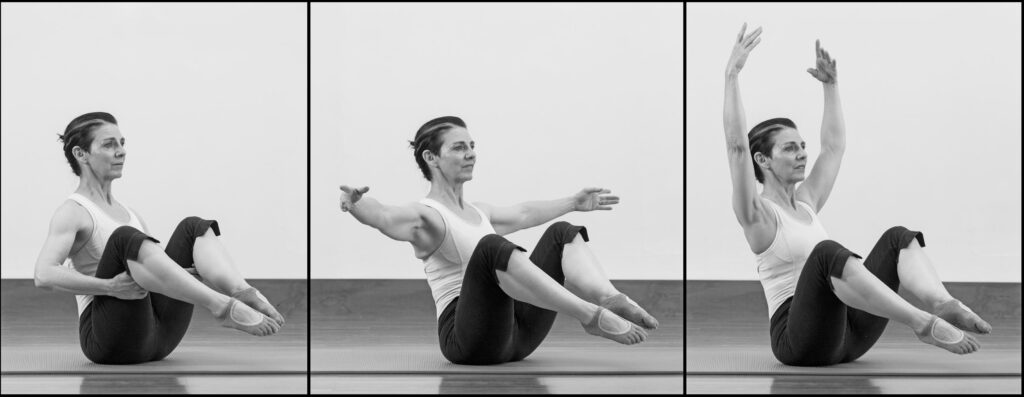Issue #419 – Wednesday, December 13, 2023
What are we IMPRINTING?
Part 2
by Dr. Suzanne Martin
In Part 1 of Imprinting, self-touch and rib impressions explored how curated pressures have a beneficial effect on both superficial and deep fascial connections. This edition will focus primarily on the imprinting of the pelvis and spine.
Rolling and Balance Point are two beloved terms in the Pilates World.
The original thirty-four exercises described in Joseph Pilates’ Return to Life provides the foundation of any Pilates movement educator’s work.
The Seal, Rolling like a Ball, Double Leg Rocker along with the concept of Balance Point all involve pressure across the body and against the sacrum and ischial tuberosities. The body pressure on the back and the pelvis stimulates sensory endings and promotes fascial tensioning, in a good way. However, consider the experience of those with spinal and trunk asymmetry. Scoliosis is basically an unstable spine that was not able to hold vertically in gravity without buckling sideways. It develops both stiff and loose areas and when seen from the posterior are generically called the convex and concave areas, respectively. Navigating the alternating stiff and loose zones can understandably create a difficult task for these clients in these typical Pilates moves.
Let me suggest some alternatives and point out how to use them to both the teacher’s as well as the client’s benefit. It is not that those with scoliosis can never perform such exercises. Yet the astute teacher knows that degree of scoliosis matters, such as a forty-degree curve and higher, or in the case of spinal fusion, to select other more neutral and appropriate exercises.
Sideways rolling is a great alternative to start this population given that the individual has no other precautions such as spondylolisthesis, where vertebrae are past one another or osteoporosis, where rotation with body weight is not advocated. In wrapping up my Aging with Asymmetry course, one takeaway is that when dealing with the mature client with scoliosis, the co-morbidity or added condition, may need to take priority over the scoliosis issue. If the kyphotic, waist collapse of osteoporosis is present, stay neutral and proceed slowly. Interestingly, end-stage scoliosis can closely resemble the kyphosis and collapsed respiratory waist of osteoporosis, and is often accompanied by the Leaning Tower of Pisa effect seen in clients with Parkinson’s disease.
Once the client is cleared to move laterally on the mat, go for it.
The Baby Roll is my go-to exercise for many reasons. It starts on one’s side, giving input into the body laterally, then rolls across the back sequentially starting with the legs, across the pelvis to the other side.
The beauty of this one is that it allows input to give time for interoception, inner body perception from one shoulder and thigh to imprint across the ilium, the sacrum, to the other ilium and ending on the other thigh and shoulder. When the hands stay connected onto the knees and the lower body leads gently allowing sequential movement from the pelvis, through the lumbar, thoracic, and finally cervical and head, bio tensegrity, tensional integrity of the spinal column, comes into play. What this means is that we are helping the spine to use the principle of Force Closure. Force Closure is concept where when the skeleton is not perfect, we also have Force Closure, where the deep fascial elements help to create the movement, a skill that anyone with any spinal problems will appreciate.
The Thoracic Mobilizer, another go-to for the scoliosis population, is a modification of the Mermaid. Side bending as in the Mermaid whether on the Reformer, Trap Table or Chair is difficult if not precautioned here. It may not be obvious at first but the imprint/pressure on the pelvis and forearm considerably help clients with scoliosis to get into the back door of the Mermaid, making the joy of participation likely in the future. Functionally, the side imprinting, being able to push sideways into the mat, is a part of the neurodevelopmental sequence of infants and toddlers to attain sitting, standing, and walking.
Sit on one side of one pelvis, lean sideways. Place the forearm on the mat. Reach forwards to place the free hand, and possibly forearm on the mat parallel to the supporting forearm.
Sitting on the side of the pelvis and pushing the mat away begins the imprint pressure. Start to sequentially flex the spine from the sacrum to the head. Then reverse the action, extending the spine from the coccyx to the head. Keep pressure, imprinting, into the floor with the forearm. After three to four repetitions, walk the forward hand past the supporting arm’s hand and glue the pads of the fingers onto the mat. Perform the same spinal flexion and extension, being careful not to strain. End by returning the forward hand to the thorax, and lower down to breathe and rest before sitting up and repeating to the other side.
Another form of imprinting, the Balance Point postures and moves, are another way to input pressure into the anticipatory posture muscles. One of my favorites I call the Balancing “O,” which is especially good for those with spinal asymmetry since unequal sitting weight is common. Just the action of imprinting the sit bones stimulates pre-activation of the prevertebral (deep neck fascia and musculature) and paravertebral (muscles and fascia close to the spine) connections. Evidence shows that pre-activation in the spine gives stability to the structure, another example of force closure in action.
Sit on the sit bones. Slide the feet toward the pelvis and hold the ankles. Then slide the hands along the back of the thighs from the hips to about mid-thigh. Roll the shoulder blades backwards. Tip the body weight slightly backwards. Pull the elbows backwards to find the balance on the bottom of the pelvis. Sit tall. Smoothly release the arms sideways. Begin to circle the arms from the hips, forward to reach to the high “O” shape. Circle: “breathe in get tall, exhale get taller” for three repetitions. At the end, hold. Then release by sitting back, bracing the hands behind. Gently rock the knees side to side several times.
Our Pilates tradition gives so many opportunities to dive deep into the simplest of movements to create profound effects over time. I never had to opportunity to meet Mr. Pilates in person, yet fortunate enough through all of predecessors to meet him in spirit.

Dr. Suzanne Martin is an international speaker, coach and mentor in the field of human movement and potential. She is CEO of Pilates Therapeutics, offering continuing education and maintains a private Pilates/Physical Therapy practice, Total Body Development. As doctor of physical therapy, exercise physiology and gold-certified Pilates expert, she authored three movement titles with Penguin Books and a fourth, Spinal Asymmetry, with Handspring Publishing. Her present Handspring project to be co-authored with Elizabeth Larkam, involves movement practices for connective tissue (hypermobility) conditions. Blending art and science in over 40 years of teaching experience, Dr. Martin’s passion is to help those with chronic conditions that require lifelong learning and management such as professional and recreational performance, foot issues, spinal asymmetries, connective tissue issues (hypermobility), women’s health and cancer survivorship. As performing arts specialist, she is a Wellness Consultant for Smuin Ballet for over 25 years. For further information and to see her new virtual hybrid teaching schedule, go to www.pilatestherapeutics.com.






